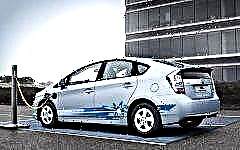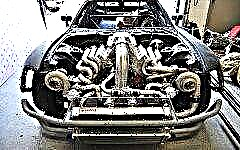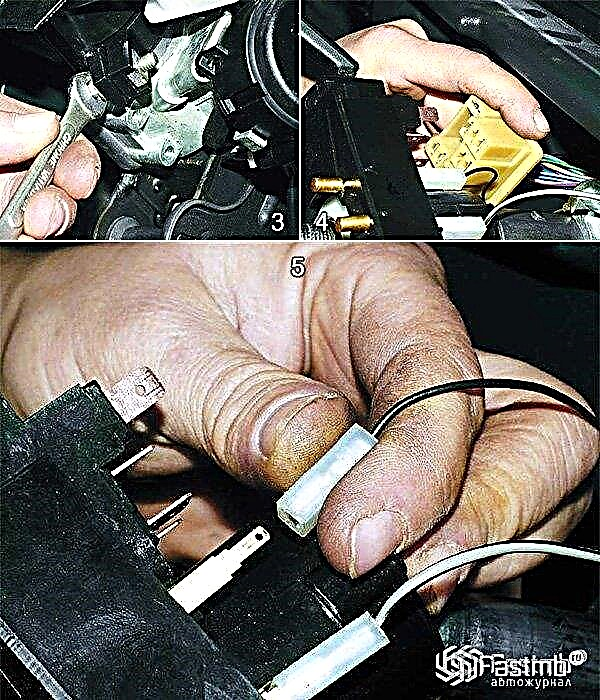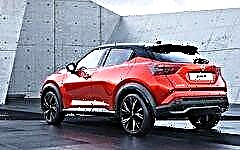

The content of the article:
- Diesel Mercedes-Benz OM602
- Stove from BMW - M54 engine
- Toyоta 3S-FE
- Subaru EJ20
- Honda d15
- Toyota 1JZ-GE
- Opel 20ne
In the understanding of European drivers, reliable engines are those units that travel 100,000 km without repair and at the same time minimize air pollution. The Americans will call the engines reliable, on which they can cross the Nevada desert, and it does not matter that after a triumphant finish, the engine is permanently out of order.
For Russian drivers, only those units that live longer than others before major overhaul will fall under the category of "the most reliable engine", and it does not matter if it is a complete "capital" or only replacement of piston rings.
Until 2010, the Russians had German motors, from Mercedes and BMW, as the undisputed leader, but recently Japanese and Korean manufacturers have been trying to squeeze the venerable old people of the motor industry.
The rating will not include the classics of American engineering - engines from Ford, because for all their reliability, Russian roads “kill” purely American engines faster than German ones. And, importantly, there is probably not a single engine in the world where there would not be something from Ford, well, at least a small screw ...
What engines are considered the most reliable in our company:
- Diesel Mercedes-Benz OM602.
- Stove from BMW (gasoline engines of the M series).
- Toyta 3S-FE.
- Subaru EJ20.
- Honda D15.
- Toyota 1JZ-GE.
- Opel 20ne.
Diesel Mercedes-Benz OM602

Among all high-class Mercedes engines, each of which deserves a certain place in the ranking, the OM602 diesel engine occupies a special place. This power unit has left far behind its gasoline counterparts, and it is he who can be put in first place among the most reliable engines.
Having appeared in 1985, the motor was produced until 2002 without structural changes. This diesel engine was installed on all modifications of Mercedes Sprinter minibuses and is deservedly considered the most reliable. It is the simple design of the motor, without complex electronic components, and the best operating mode for the unit that allow OM602 to show from 360,000 mileage without caps. repair.
The units in the entire line do not differ in high power - they have from 102 to 122 hp, with a volume of 2.9 liters. Mercedes engineers took the OM617 diesel engine generation as a basis. When production of 602 ended in 2002, it was replaced by similar ones - OM617.
The in-line five-liter diesel is water-cooled and has a torque of 282 Nm at 2030 rpm. This unit feels great even after half a million kilometers, if it is properly "fed" and "cleaned".
Stove from BMW - M54 engine

The Bavarians were able to gain popularity among drivers for a long time with their M-series motors, among which were 4-cylinder diesel engines and petrol versions. The inline 6-cylinder engines, which became the face of the series, received the clear name "plate" from the Russians. The last six M54 was released in 2006, but so far some units have not been overhauled.
The very first development that gave impetus to the entire M product line appeared in 1977. It was a six-cylinder M20, which received unit improvements and upgrades every year. Its 3.2-liter version, which was discontinued in 2008, was already called the S54.
One of the most deserved engines of this series, the M50, in volumes from 2 to 2.8 liters, had cast iron liners in an aluminum block, a variable valve timing system, both at the inlet and outlet, and an electronic BDZ. Although there were some changes in the M54, they were not so significant as to change the main parameters of the motor. The engine has a shaft from the S version, the connecting rods are reinforced, the pistons are steel with a slightly shorter skirt.
The engine block is capable of serving up to a million mileage, but some components will require repair a little earlier. For example, the piston system will require repair after 200,000 runs, the timing chain after 150,000 km. Although this engine is considered the "swan song" of BMW and the best that the Bavarians have produced, it cannot be called an impeccable unit. Only reliable and worthy of attention.
Toyоta 3S-FE

The Toyota concern was able to make a breakthrough in the world of engine building in the late 80s, releasing its unique 3S-FE, which became the most unpretentious and "unkillable" unit of the S series. For a four-cylinder gasoline engine of mass production, the most optimal volume was taken: two liters. With an average power, the entire line of the Toyota series produces up to 148 hp, the simplest injection model and a timing drive are provided.
All modifications of Toyota sedans and station wagons (Avensis, Caldina, Camry, Carina, Celica, Corona) were equipped with engines until 2002. Minivans Toyota Lite Ace Noah, the first generation Picnic and the RAV4 crossover received a slightly improved power unit, with more power, and a turbocharging system.
The average service life of this hardy "kamikaze" before overhaul is at least half a million kilometers. More than 20% of these engines already reach the millionth run without caps. renovation, but this is the personal merit of the owners.
Subaru EJ20

Among the two-liter gasoline engines, Subaru EJ20 has proven itself perfectly, which appeared on the Russian market only after it had “won back” its batch in Asia and America. Having appeared in the mid-80s, the mass production of this four-stroke boxer unit took place in the early 90s. The engine was discontinued in 2011 and was replaced by an updated version of the FB series.
The average "lifespan" of the Subaru EJ20 is from 250,000 km. mileage. Average power up to 120 HP and water cooling made this motor not only the first among the hardy "small cars", but also the most expensive to repair. This is the only Japanese engine that in 1999 had one prescribed overhaul size, but even with an alternative in the block sleeve, very few original components were produced. Because of this, the EJ20 was the most expensive engine to maintain.
Honda d15

Honda's D series of engines consists of fifteen engines, which differ from each other almost only in power. The range includes motors from 1.2 to 1.7 liters with a maximum power of 131 hp. The first engine was produced in 1985, the last engine of the series rolled off the assembly line in 2005.
The most durable among the modification is the Honda D15 engine, which with a power of 130 hp. with. was installed on Honda Stream, Accord, Civic, HR-V, and Acura Integra until 2007. It was this engine that made a breakthrough in the further development of single-shaft motors.
This four-cylinder engine was equipped with a timing belt drive and rotated according to "Honda's Law", that is, against the hand of the clock. The fuel system involved supplying a mixture using two carburetors - another know-how of the Japanese concern. These engines worked perfectly (it's scary to imagine) without oil and coolant for more than a dozen kilometers.
The average lifespan of a Honda D15 before the first "capital" is 350,000 mileage, and this is in the case when the driver "mocked" the car. Having served almost without modernization on the market for 21 years, the series has earned the title of the most "unkillable" motor of the 20th century.
Toyota 1JZ-GE

This engine was the second breakthrough of the Japanese manufacturer. After the triumph of Toyota 3S-FE, the first generation of 1JZ-GE engines significantly strengthened Toyota's place in the global market as the manufacturer of the most reliable and long-lasting power units.
The first in-line six-cylinder 1JZ-GE engine appeared in 1990, the engine displacement was 2.4 liters. Literally a month later, a similar 3-liter unit was released on the market and then for 19 years these engines practically did not change.
In addition to the fact that these were high-tech units (the first motors - 180 hp, the last - 251 hp), they also differed in weight: the average engine weight was 220 kg. They were equipped with models Toyota Crown, Tourer V, Supra, Brevis, Soarer, etc. Four valves per cylinder and a new DOHC gas distribution complex made these engines the most powerful in the line of similar units and the most reliable. The first major overhaul occurs after 500,000 mileage, and many Toyota models with a 1JZ-GE engine exceed their second million mileage.True, not on the roads of Russia.
Especially for sedans, since 1992, an increased resource and a new electronic fuel supply system appear in the 1JZ-GE engines. Gasoline burned at 99.% at all revs, and the engines easily coped with high speeds and low revs.
Opel 20ne

Closes the Opel 20ne rating. Although this engine is considered a joint development of European and American engineers and has a shorter lifespan than its Japanese counterparts, Opel 20ne became famous for the fact that in 80% of cases the engine was the last part that needed repair.
The first two-liter four-cylinder engine with a simple belt drive appeared in 1987. This unit was equipped with all modifications of Opel Kadett, Astra, Vectra, Omega, Frontera, Calibra in the sedan body. Average engine power up to 130 hp. coped well with all rpm modes.
After undergoing more than one update, the 20ne motors were discontinued in 1999., they have been replaced by the more modern and powerful 16-valve C20XE units used on Chevrolet models in the 2017 WTCC and Rally Championship.
This brief overview provides an incomplete picture of the most reliable engines in the world. But these are, of course, those units that have shown themselves to be the most durable and reliable for difficult Russian roads.











